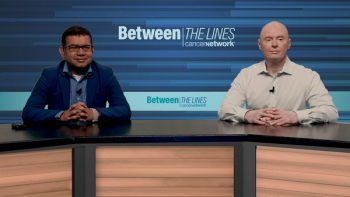
Panelists discuss the unmet need for effective therapies in early-relapse multiple myeloma, where patients have exhausted standard treatments but do not yet qualify for bispecific therapies or CAR T cells.

Your AI-Trained Oncology Knowledge Connection!


Panelists discuss the unmet need for effective therapies in early-relapse multiple myeloma, where patients have exhausted standard treatments but do not yet qualify for bispecific therapies or CAR T cells.
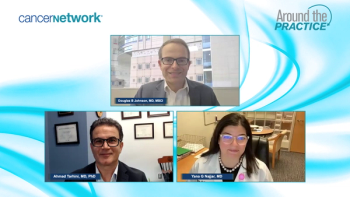
Panelists discuss how sequencing immunotherapy combinations strategically can maximize patient outcomes, noting that ipilimumab-nivolumab may work well after progression on relatlimab-nivolumab (an approximately 27%-30% response rate), while the reverse sequence is less effective (an approximately 12% response rate).
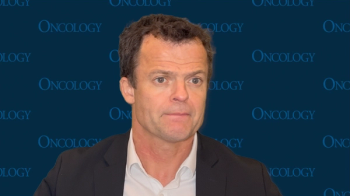
Considering which non–muscle-invasive bladder cancer cases may be cured by surgery alone may help mitigate overtreatment in this patient group.

Event-free survival benefit was observed among BCG-naive patients with carcinoma in situ undergoing treatment with sasanlimab plus BCG.

Tetiana Skrypets, MD, highlighted that older adults with PTCL may be treated as younger adults if they pass the geriatric assessment.
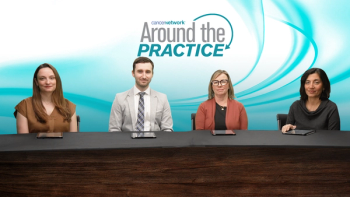
Panelists discuss how effective management of cytokine release syndrome and immune effector cell–associated neurotoxicity syndrome in complex extensive-stage small cell lung cancer (ES-SCLC) cases treated with tarlatamab enables patients to continue therapy and achieve meaningful clinical benefit despite early toxicities.

Panelists discuss how best practices for transitioning from inpatient to outpatient care involve clear communication, regular monitoring, and adjusted visit frequencies, while addressing challenges such as care coordination and patient adherence to follow-up plans.

Panelists discuss how future research priorities for tarlatamab focus on optimizing administration, improving toxicity management, and enhancing patient selection, with an emphasis on minimizing adverse events while maximizing efficacy and evaluating long-term safety.
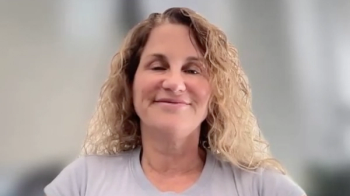
Data from a study shared at the 2025 ASCO Annual Meeting showed that a microRNA-based model was able to predict irAEs in various cancers for those on anti–PD-1 therapy.

Identifying which patients are at risk of distant failure may assist oncologists in deciding who should receive neoadjuvant radiation, according to Joanne B. Weidhaas, MD, PhD, MBM.
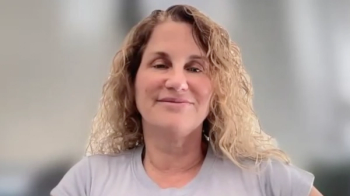
Joanne B. Weidhaas, MD, PhD, MBM, presented 2 abstracts based on microRNA technology at the 2025 ASCO Annual Meeting that demonstrated predictive power.

Specialties including neurosurgery, radiation oncology, and neurorehabilitation all play a notable role in the care of patients with brain tumors.

Panelists discuss how the Mirasol trial's demonstration of superior response rates (42% vs 15.9%) and overall survival (16.5 months) for the FDA-approved folate receptor alpha-positive ADC represents a revolutionary advancement in platinum-resistant ovarian cancer treatment, offering patients prolonged responses with better tolerability and quality of life compared to standard chemotherapies.

Panelists discuss how overcoming barriers to molecular testing in ovarian cancer requires addressing logistical challenges like tissue availability and external pathology coordination, managing financial constraints through institutional support and low-cost options, and enhancing patient communication by clearly explaining how testing creates a personalized treatment roadmap that empowers patients to pursue tailored therapies based on their tumor's genetic and molecular profile.

Treatment-related toxicities during neuro-oncology therapy appear well managed with dose modifications and treatment cycle holds.
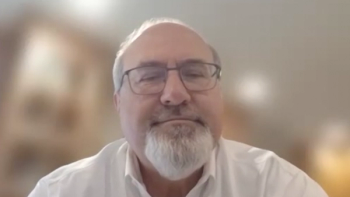
The phase 3 NIVOSTOP trial evaluated an anti–PD-1 immunotherapy, nivolumab, in a patient population similar in the KEYNOTE-689 trial.

CAR T-cell therapies appear to be an evolving modality in the treatment of those with intracranial tumors, said Sylvia Kurz, MD, PhD.

Opportunities to further reduce relapses include pembrolizumab-based combination therapy and evaluating the agent’s contribution before and after surgery.

For patients with locally advanced head and neck cancers, the current standard of care for curative therapy has a cure rate of less than 50%.
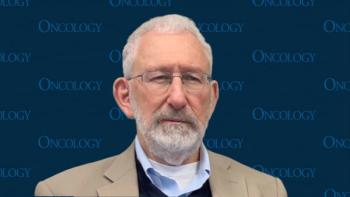
According to Maurie Markman, MD, patient-reported outcomes pertain to more relevant questions surrounding the impact of therapy for patients.
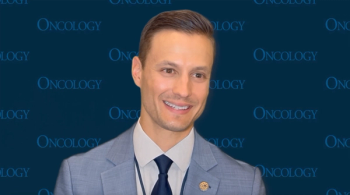
Brandon R. Mancini, MD, MBA, FACRO, discussed results from a phase 1/2a trial that evaluated [212Pb]VMT-α-NET in patients with advanced NETs.

CancerNetwork® spoke with Neha Mehta-Shah, MD, MSCI, about the clinical landscape for patients undergoing treatment for rare lymphomas.

Panelists discuss how community oncologists have developed good experience managing immune-related adverse events and are increasingly adopting relatlimab-nivolumab due to its lower toxicity profile and convenient administration schedule of half-hour infusions every four weeks.

Panelists discuss how treatment selection is personalized based on patient characteristics, with relatlimab-nivolumab or monotherapy preferred for frail patients with low disease burden, while ipilimumab-nivolumab might be considered for patients with brain metastases despite its higher toxicity.

Panelists discuss how standardized toxicity grading for cytokine release syndrome and immune effector cell–associated neurotoxicity syndrome helps guide physicians in the timely management and escalation of care, emphasizing the importance of symptom grading and clear institutional protocols for intervention.
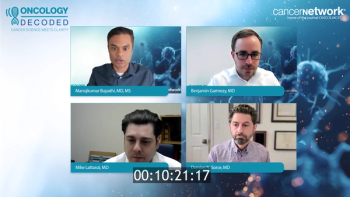
Manojkumar Bupathi, MD, MS; Benjamin Garmezy, MD; Mike Lattanzi, MD, and x Damian N. Sorce, MD discuss how the practical applications of PSMA PET imaging, risk stratification, and evolving treatment strategies for advanced prostate cancer.

Panelists discuss how tarlatamab’s toxicity profile differs from traditional cytotoxic therapies, highlighting its immune-related adverse effects such as cytokine release syndrome and immune effector cell–associated neurotoxicity syndrome, while noting its lower risk of myelosuppression and long-term organ damage compared with chemotherapy, which tends to cause cumulative toxicities such as bone marrow suppression.

Results from the EPCORE NHL-1 trial shared at the 2025 ASCO Annual Meeting found positive responses in patients with relapsed/refractory large B-cell lymphoma.
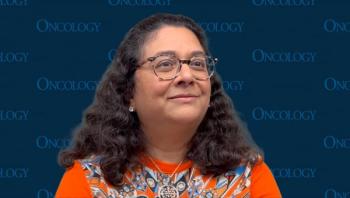
Future findings from a translational analysis of the OVATION-2 trial may corroborate prior clinical data with IMNN-001 in advanced ovarian cancer.
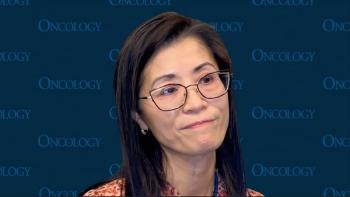
The dual high-affinity binding observed with ISB 2001 may avoid resistance mechanisms reported with other BCMA-targeted therapies.